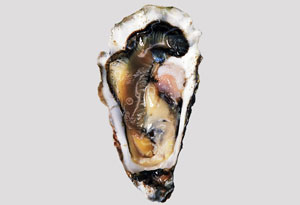The Picky-Eater Complex: Getting Over Your Fear of Food

Photo: Tom Schierlitz/Getty Images
She thought her husband was just being a picky eater. Then Celia Barbour went in search of the roots of distaste, and discovered that they're a lot murkier than she'd ever imagined.
One of the small sorrows of my adult life is being married to a man who won't eat tongue. "It's delicious," I tell him, but he won't budge. "If you tasted it and didn't know what it was, you'd love it," I say. "The problem is all in your head!" "So?" he says, perfectly content with his head and its problems. "I'm still not eating it."
Undeterred, I describe the excitement I felt as a kid when I'd lift the lid on my mom's big frying pan and spy a beef tongue cooking there. "It was curled—you know, like that Rolling Stones logo," I say, "only brownish gray, and covered in cream of mushroom soup, and, um...." I realize I'm not making headway. Tongue is a hard sell to someone who has already placed it firmly outside his own personal sphere of comestibility.
We all have versions of these spheres, into which we segregate the edible from the inedible. Culture and ethnicity play a huge part in what winds up inside them (we do not eat monkey; the Penan of Borneo do), as do our parents and friends, advertising, politics, religion, our anxieties, and life experiences. It's no wonder each person in the Western world (where we have so much choice about what to eat) probably defines "edible" in a slightly different way. Our individual menus are as unique as our fingerprints.
Take my friend Maria Ricapito. She is an adventuresome cook who is utterly incapable of eating an egg if the white and yellow aren't combined. She can eat omelets and scrambled eggs. But fried eggs? Deviled eggs? Hard-boiled eggs chopped up in potato salad? "I can't even choke them down," she says, her voice taking on a tinge of hysteria. "Something about the texture—you know how the yolks are kind of crumbly and the whites sort of rubbery and solid? It just doesn't work for me at all."
No one starts out life with an aversion to eggs or tongue—or, for that matter, to liver, okra, lima beans, or any of the dozens of other foods many people come to revile as adults. Indeed, according to Paul Rozin, PhD, professor of psychology at the University of Pennsylvania and an expert in disgust and food choice, there are only a handful of flavors our brains are hardwired to reject, and all are typical of foods that historically had a high likelihood of making us sick—spoiled things like moldy bread and sour milk, and bitter things like caffeine. "A lot of natural plant toxins are bitter," he says. In addition to this self-protective mechanism, there are two other universal, built-in predilections: First, a suspicion of (yet interest in) unfamiliar foods. And second, the ability to connect something new we ate to certain consequences, such as nausea.
That's it. "Everything else is acquired," according to Elizabeth Capaldi, PhD, provost of Arizona State University and a longtime professor of the psychology of eating. "There's no inborn dislike for any other taste or smell, even of vomit or feces." In other words, you can't blame genes when you pick the anchovies off your pizza. So where do we acquire our vast range of idiosyncratic dislikes?
"Their origin is obscure," says Rozin. He admits that we generally grow to dislike foods that remind us of our bodily functions, guts, or mortality—which might explain why liver (and other mealy, pasty foods) and oysters (and other squishy, slimy foods) put off so many people.
It might even account for Maria's egg issue. She half-recalls overhearing as a child that eggs were chicken embryos, a thought that disturbed her in a way she still can't quite explain without turning green. Says Capaldi, "Sometimes an idea produces an emotional reaction, and the emotion produces a physiological reaction"—namely, nausea. This isn't hardwired self-protective "disgust," but it may have somehow piggybacked on the same apparatus. As Capaldi says, "The disgust mechanism is a very, very powerful thing. Putting something in your body is an intimate act." Any revulsion you feel toward a food is magnified by the thought that it will become part of you.
Are diets really set in stone?



